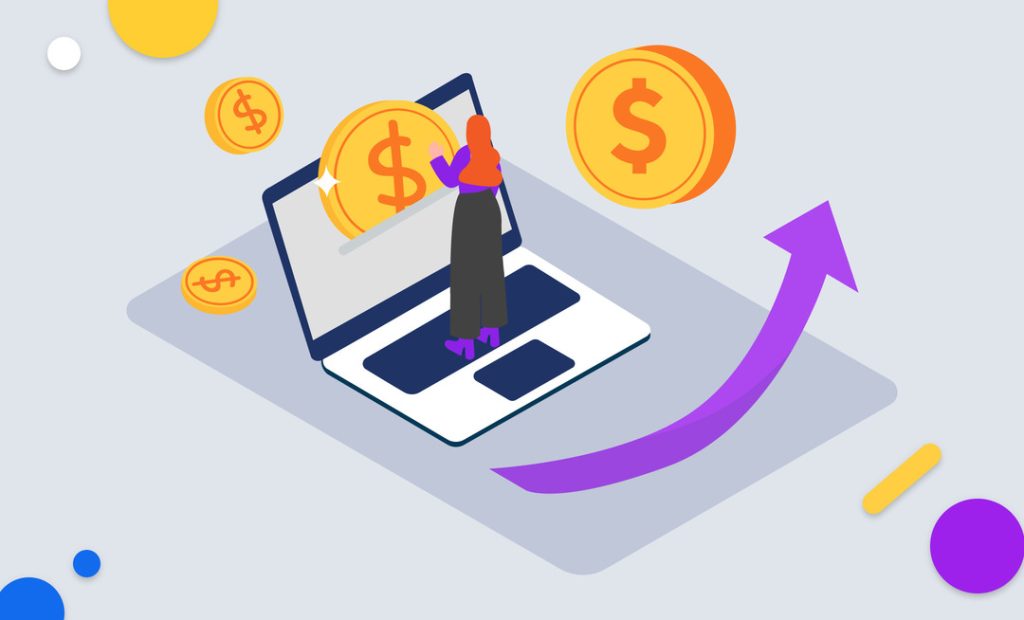
The complicated truth about affiliate marketing programs is that you don’t just launch one and expect loyalty from marketers. Instead, it takes proactive strategies to build a program that inspires dedication rather than merely adding to an affiliate’s long list of options.
One of the most effective affiliate incentives for promoting long-term loyalty is rebates. These are performance-based rewards that boost your affiliate partners’ morale to promote your products even better. The result is increased earnings or revenue for all parties and ultimately long-term partnerships.
In this guide, we cover everything you need to know about affiliate marketing revenue rebates, including what they are, how they work, the different types, and how to implement them. We’ll also show you how Cellxpert, a leading provider of affiliate marketing solutions, can give you the tools to set up and manage different commission structures, like rebates, for maximum ROI.
What are Affiliate Rebates?
Rebates are a compensation model where affiliates earn a portion of the total revenue their referrals bring in. Think of them as a cashback reward that awards top-performing affiliate partners.
They offer an additional earning layer on top of traditional commission structures. So, they are not a replacement for other commission structures at all. In fact, rebates are among the various types of motivation strategies that top affiliate programs use to make their partners increase performance and remain engaged. Other top affiliate incentives include free products, discount coupons, store credits, audience discounts, gamified rewards, and promo codes.
When it comes to the payment, rebates can be in the form of a percentage or a fixed amount. We cover the types later in this article.
Rebates vs. Traditional Commission Models
In standard commission structures, such as Cost Per Action (CPA), Cost Per Sale (CPS), or Revenue Share (RevShare), affiliates earn a fixed commission for each completed action or a percentage of the sales they drive. While these models incentivize affiliates to generate traffic and conversions, they often lack a long-term engagement focus.
That’s why performance-based rewards, like rebates, are necessary. With rebates, affiliates earn back a percentage of the total revenue generated from the referrals they bring in. When a partner knows they can make 5% more by making additional 10 sales, they will put in the necessary efforts to increase their potential income.
Why Rebates Matter (and are Effective)
It’s almost impossible to ignore affiliate motivation strategies like rebate systems and build unmatched loyalty for your program. This form of affiliate incentive is becoming increasingly popular, especially in competitive industries like iGaming, finance, and eCommerce. That’s simply because incentives are a powerful tool for businesses to attract customers, build loyalty, and increase sales. They provide a win-win situation where both parties benefit.
Here’s a quick rundown of why rebates work:
- Goal Setting Effect: Establishing clear performance tiers means giving affiliates solid targets to aim for. This should naturally drive higher performance.
- Loss Aversion: Once affiliates reach a certain tier, they’re motivated to maintain that level to avoid losing their enhanced earning potential.
- Competitive Advantage: In a marketplace where many programs offer similar base commissions, rebates can be your differentiator in attracting ambitious affiliates.
How Affiliate Rebates Work
Ready to look at how rebates work? They operate on a straightforward process that involves several key steps:
- Promotion: Affiliates promote a merchant’s products or services through marketing channels, such as websites, social media, or email campaigns. Each partner uses a unique tracking affiliate link.
- Tracking: When a customer clicks on this affiliate link and makes a purchase, the merchant’s system records the sale and attributes it to the respective affiliate.
- Rebate Calculation: The business calculates the rebate based on a predetermined percentage of the total revenue generated from the sales or leads driven by the affiliate. This rebate is typically calculated after the initial commission has been paid. The timeframe for calculating rebates impacts both affiliate motivation and your program’s cash flow.
- Distribution: The calculated rebate is then paid to the affiliate, often on a regular schedule (for instance, monthly or quarterly), as long as the conditions of the affiliate agreement are met.
Examples of Affiliate Rebates
Since these are performance-based rewards, every brand chooses the important metrics to use. This could be volume, sales, traffic, and more.
Let’s start with a sales-based rebate. An affiliate sells 50 products at $100 each, generating a total of $5,000 in revenue. If they earn a 15% commission, that’s $750. Now, if their rebate rate is 10% on total revenue, they earn another $500, bringing their total earnings to $1,250. The more products or services they sell, the higher their rebate and total payout.
What about traffic-based rebates? An affiliate drives 2,000 visitors to a merchant’s site. If 100 of those visitors make a purchase of $50 each, the total revenue generated is $5,000. If the affiliate earns a 10% commission on sales, they receive $500 plus an additional 5% rebate on the total revenue, amounting to $250. Their total earnings for that period would be $750.
Rebate Tiers and Thresholds
The most popular rebate structures are tier-based. These are structured commission rates based on performance levels.
For instance, an affiliate might earn a 2% rebate for the first 10 sales, 5% for the next 10 sales, and 10% for any sales beyond that. This encourages the affiliate to drive more volume to unlock higher rebate rates.
Most merchants will have tier names like bronze, silver, gold, and platinum. Each level specifies the performance metrics to be met and the rebate amount expected.
Benefits of Rebates for Affiliates
Here are some of the main advantages of implementing affiliate rebates:
Increased Earnings Potential
Implementing affiliate rebates means creating an additional revenue stream on top of regular commissions. This motivates affiliates to promote your products or services effectively so that they can get more earnings. The enhanced earning potential of commission rebates can transform your program from one that affiliates casually promote to one they prioritize and focus on scaling.
Incentive for Higher Performance
Rebate models typically incentivize affiliates to drive more traffic, conversions, or sales, depending on your program’s goals. With clear performance tiers, you create compelling reasons for affiliates to push harder and achieve higher volumes. This incentive structure benefits both parties: affiliates earn more, and your program generates more revenue.
The psychology behind this is straightforward but effective. When affiliates see that reaching the next tier could increase their earnings, they’re motivated to invest more resources into promoting your program. This might mean allocating more ad spend, creating additional content, or optimizing their conversion funnels specifically for your offers.
Flexibility and Customization
One of the most valuable aspects of rebate programs is the ability to create flexible compensation models that align with different goals and capabilities. This means that your affiliates can negotiate the incentive structure. Rebates allow you to craft customized incentives that can:
- Reward different types of performance metrics or milestones
- Accommodate various affiliate business models
- Adjust to market conditions or seasonal changes
This way, affiliates can tailor their earning potential to their unique strengths and strategies.
Long-term Partnerships
Building long-term affiliate partnerships and a stellar brand reputation is probably the most strategic benefit of rebates. When affiliates consistently earn rebates, they become invested in maintaining and growing their relationship with your brand.
This loyalty translates into reduced affiliate churn. Partners are less likely to switch to competing programs if they manage to establish a profitable business with yours. Also, long-term affiliates often become more effective promoters as they learn what works best for your products or services over time.
For program managers, these long-term partnerships mean more stable revenue, better predictability in performance, and the ability to build on past successes. Affiliates who stick with your program long-term often become valuable partners who provide insights, feedback, and a reliable promotional channel for new offerings.
Different Types of Affiliate Rebates
By offering different types of rebates, you can adjust your program to meet specific business goals and keep your affiliates engaged. Below are common rebate structures to consider:
Volume-Based Rebates
The most common and straightforward type of rebate structure is based on sales, leads, or traffic volume. Working with volume-based rebates allows you to reward affiliates who drive significant business to your program. The rebate percentage typically increases as affiliates reach higher volume thresholds.
These commission rebates work particularly well for eCommerce and subscription-based businesses. For instance, you can start with a 1% rebate for affiliates who generate $10,000 in monthly sales, increasing to 3% at $25,000 and 5% at $50,000. This structure encourages affiliates to scale their efforts, knowing that higher volumes result in better earning potential.
Loyalty Rebates
Instead of focusing solely on volume, loyalty rebates consider the length and consistency of an affiliate’s performance in your program. They might get exclusive incentives for their consistent performance over time. It can be one year or more, depending on the average affiliate retention rate for the program and industry. This approach is more effective in industries with longer sales cycles or where affiliate expertise develops over time.
Tiered Rebates
Tiered rebate systems combine elements of volume and loyalty. The result is a comprehensive reward structure that motivates affiliates to both perform and persist. In tiered commission rate structures, affiliates progress through different levels with enhanced benefits and earning potential.
The system can be designed to consider one or multiple factors when determining an affiliate’s tier. For instance, a Gold tier might require both a certain sales volume and a minimum number of active months in the program. Or it might simply require a certain range of sales volume. Whatever the case, this strategy creates a sense of achievement and status within your program, which motivates affiliates to strive for higher tiers.
Seasonal or Promotional Rebates
Experienced program managers understand the power of timing and use seasonal or promotional rebates to align affiliate incentives with business goals. These limited-time rebate offers can drive extraordinary results during crucial periods. For instance, you might offer enhanced rebates during the holiday shopping season or when launching a new product line.
Promotional rebates create urgency and excitement within your affiliate network. In turn, it motivates affiliates to prioritize your program during critical times. These short-term incentives can also serve as a testing ground for new rebate structures. As such, you can gauge the impact of different reward levels before implementing them permanently.
Implementing Affiliate Rebates: Best Practices
Consider the following best practices when implementing a rebate system for best outcomes.
Choosing the Right Model
Not every rebate model will work for your program. Selecting the most appropriate structure demands a careful analysis of your business goals, industry dynamics, and affiliate network features.
Start by examining your current program performance data to identify patterns and opportunities. Are your top affiliates hitting a performance ceiling? Are newer affiliates struggling to gain traction? Your rebate structure should address these challenges while aligning with your overall business objectives.
Consider your product lifecycle and sales patterns when designing your rebate tiers. Let’s assume your industry has high customer lifetime value but longer sales cycles. In that case, your rebate structure might need to account for both immediate conversions and long-term customer quality.
Similarly, if your business experiences seasonal fluctuations, your rebate model should be flexible enough to accommodate these variations while still providing consistent incentives.
Tracking and Reporting Rebates
Implementing a robust tracking and reporting system is crucial for the success of your rebate program. Your affiliates need to trust that their performance is accurately measured and that they’ll be fairly compensated.
Invest in technology that provides real-time visibility into performance metrics and progress toward rebate tiers. This transparency builds trust and motivates affiliates by allowing them to see their progress and potential earnings.
You can’t go wrong with a modern affiliate platform like Cellxpert. We offer sophisticated tracking capabilities that handle complex rebate calculations automatically, including those for influencer campaigns. The system can track multiple performance metrics simultaneously, apply different rebate rates based on various criteria, and automatically calculate payouts at the end of each period. Automating these processes reduces the risk of errors and frees up time to focus on strategic program management.
Negotiating Rebates with Affiliates
While having a standard rebate structure is important, be prepared to negotiate with high-value affiliates who may require customized terms. These negotiations should be approached strategically, with a clear understanding of both the affiliate’s potential value to your program and your margin constraints. Consider factors beyond just sales volume, such as the affiliate’s audience quality, brand alignment, and potential for long-term partnership.
During negotiations, focus on creating win-win scenarios that encourage performance while protecting your program’s profitability. Be transparent about your expectations and what you can offer in return. Remember that rebate negotiations often extend beyond just percentages. So, consider offering exclusive promotions, early access to new products, or dedicated support as part of the package.
Here are some tips on effective negotiation between affiliates and program managers:
- Demonstrate value with previous performance metrics that justify requests for better terms.
- Highlight unique strengths that set your partnership apart from others.
- Frame negotiations around mutual benefits.
- Be flexible and willing to adapt proposals based on feedback for more productive discussions.
How Cellxpert Supports Affiliate Rebates
Understanding the impact that the best affiliate program incentives can have on your brand is one thing. Having the tools to implement and optimize the strategies painlessly is another. Let’s see how Cellxpert helps program managers utilize rebates hassle-free.
Advanced Tracking and Reporting Capabilities
Cellxpert’s platform provides program managers with the sophisticated tools needed to implement, manage, and optimize complex rebate structures effectively. Our system goes beyond basic commission tracking. It offers real-time monitoring of multiple performance metrics simultaneously. This advanced tracking capability enables you to create nuanced rebate programs that consider various factors such as sales volume, customer quality, and affiliate tenure.
When you implement affiliate rebates, through Cellxpert, both you and your affiliates gain access to intuitive dashboards that display current performance levels, progress toward rebate tiers, and projected earnings.
The platform’s reporting features also allow you to generate detailed analyses of your rebate program’s impact. As a result, you can make data-driven decisions to optimize your incentive structure over time.
Customizable Rebate Models
Every affiliate program has unique needs, and Cellxpert’s flexible platform accommodates this reality. The system allows you to create customized rebate structures that align with your business goals and industry requirements.
Whether you need to implement tiered rebates based on sales volume, quality-focused incentives that reward customer retention, or more complex hybrid models, Cellxpert’s customization options ensure your rebate program works exactly as intended.
Program managers particularly appreciate our platform’s ability to handle multiple rebate structures simultaneously. This means you can create different incentive models for various affiliate segments, product categories, or geographical regions, all managed seamlessly within the same system. As your program evolves, Cellxpert’s flexibility allows you to adjust and refine your rebate structures without disrupting your existing operations.
Transparency and Accountability
Trust is fundamental to successful affiliate partnerships. That’s why Cellxpert’s platform is designed to promote transparency at every level. Our system provides a clear audit trail for all transactions and rebate calculations, ensuring that both program managers and affiliates can verify the accuracy of payments. This level of accountability is crucial for building long-term relationships with valuable affiliates who need to trust that their extra efforts will be fairly rewarded.
The platform also simplifies compliance management by automatically documenting all rebate terms and conditions. This feature is particularly valuable for programs operating in regulated industries or across multiple jurisdictions, where maintaining clear records of incentive structures is essential for audit purposes.
Automation for Payouts
Managing a complex rebate program manually can be time-consuming and error-prone. Cellxpert automates the entire rebate calculation and payment process to reduce the administrative burden on program managers.
The system automatically tracks affiliate performance, applies the appropriate rebate rates based on achieved tiers or milestones, and processes payments according to your defined schedule.
This automation extends to the generation of detailed reports and statements for both program managers and affiliates. At the end of each rebate period, affiliates receive comprehensive breakdowns of their earnings, including base commissions and rebate bonuses.
Data-Driven Optimization
Cellxpert’s analytics capabilities provide program managers with deep but easy-to-understand insights into their rebate program’s effectiveness. The platform’s reporting tools allow you to analyze key metrics such as:
- The correlation between rebate tiers and affiliate performance improvements
- The impact of rebates on affiliate retention and satisfaction
- The ROI of different rebate structures across various affiliate segments
With such data, you can make informed decisions about optimizing your rebate program. The platform’s A/B testing capabilities even allow you to experiment with different rebate structures for specific affiliate segments. This means you can refine your strategy based on real performance data, not guesses.
Unlock the Power of Affiliate Rebates with Cellxpert
With all the competition in different industries for the same customers, choosing the right affiliate program incentives can help in attracting and retaining top-performing affiliates. Rebates are particularly effective as they allow them to earn more by hitting specific performance milestones. Essentially, rebates keep affiliates engaged, happy, and motivated.
But the choice of an affiliate management platform can also hinder or allow you to effectively set up and manage different commission structures, including rebates. With Cellxpert’s comprehensive platform, you get all the tools needed to create, manage, and optimize a rebate program that drives results for your business. You’ll get advanced tracking and customizable models, automated processing, and data-driven optimization to implement sophisticated strategies without getting bogged down in administrative complexities.
Ready to create one of the best cashback programs for affiliates in your industry? Explore Cellxpert’s solutions now or schedule a demo to see how we can help in creating your affiliate rewards program.
Further Reading:



